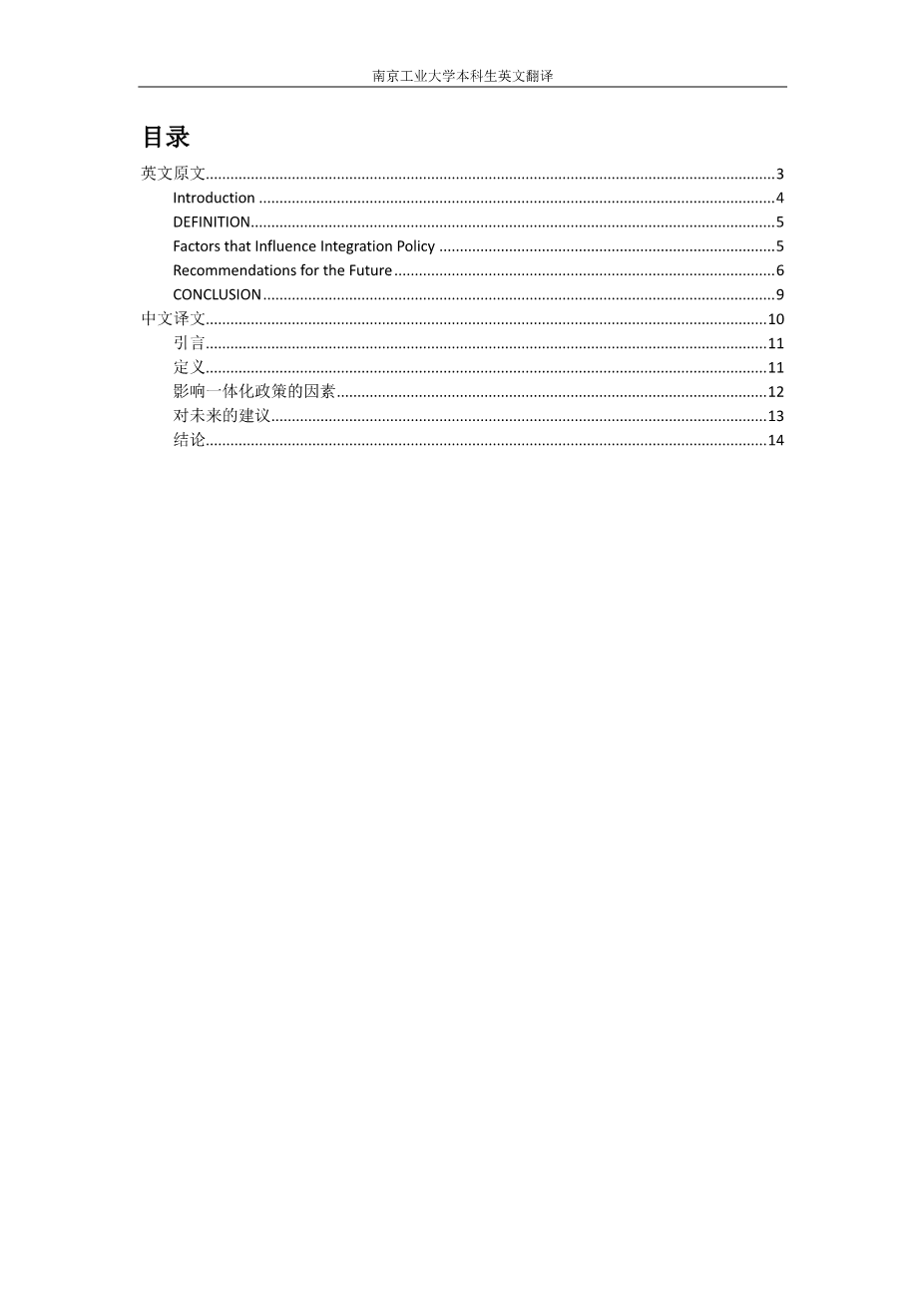Enablers and Barriers in Implementing Integrated Care(节选)
Abstract: The integration of medical and social care aims to address the fragmentation in patient services observed in many health care systems. Increasing rates of chronic disease and multimorbidity have drawn attention to the often significant reforms necessary to address these problems. In this article we discuss how
integration may be achieved. To date there is no single best practice model or well-defined guidelines for integration. We suggest that three groups of patients with complex health needs would experience the greatest benefit: multimorbid patients with two or more chronic diseases, patients with moderate or severe mental health conditions, and the elderly. Integration has been demonstrated to achieve improvements in the coordination, quality, efficiency, and cost control of health care. Considering these benefits, a broad effort should be made to implement integrated care.
Keywords: health policy, health systems, integrated care, policy implementation, public health
Introduction
The convergence of population aging, growing medical complexity, increasing rates of chronic diseases, and multimorbidity, in addition to rises in technological costs, are all placing a significant strain on health systems. New solutions are required to address this while providing high-quality care to those with complex health and social needs.
Integrated medical and social care is one such solution, defined by the World Health Organization as the concept of bringing together inputs, delivery, management, and organization of services related to diagnosis, treatment, care, rehabilitation, and health promotion. The aim of integration is to address fragmentation in patient services, enabling better coordinated and more continuous care. In short, integration is achieved by careful planning and financing, with a shared vision, centered on a target patient population. We view integration of care as the creation of structural links between previously separate healthcare services, including anything from process changes to physical co-location. Integration has been described as horizontal and vertical in the literature. Horizontal integration refers to integration occurring between providers at the same level of care, such as centralization of specialist expertise in regional centers or merging of primary care centers to a spoke and hub model. Vertical
integration refers to integration occurring between different levels of care, such as single-site polyclinics with shared processes and medical electronic records for primary and secondary care provision. In this article, we consider the broader challenges to integration as a whole (more efficient, closer working together, focused on improving efficiency and effectiveness) rather than either established definition.
Significant international attention is currently being paid to integrated care, typically expressed as a need to find better ways of delivering well-coordinated care to people living with multiple health needs. In almost all cases, integration has required significant reform, with introduction of additional and improved services outside of hospitals, supporting social care and rehabilitation. When executed well, integration has been demonstrated to achieve improvements in quality, efficiency, and cost control. Strong support has been given for this internationally, including the UK National Health Service.
DEFINITION
In the context of a given health system, integration can be defined as the combination of vertical processes aiming to improve the management of patients. Vertical integration focuses on networks and groups at different stages of care within the health system (what some commentators refer to as the supply chain or care pathway) and might involve, for instance, the drawing together of a hospital with local community services. Vertically integrated care pathways take patients from first contact to specialist to ongoing care. On the other hand, horizontal integration focuses on competing or collabo-rating organizations, networks, or groups in the health system and might involve, for instance, grouping outpatient clinics within a geographic network of providers. To achieve such integration, a framework must be devised, defining the coordination of care necessary and required vertical pathways, in addition to identifying professionals who can coordinate care. It should be broadly applicable to the range of health care systems internationally. Sufficient incentives should also be incorporated to encourage compliance of the relevant stakeholders, whether they are providers, insurers, or patients.
Factors that Influence Integration Policy
There are a number of important barriers that have stifled implementation of integration programs in the past and therefore warrant consideration. These include, but are not limited to, operational complexity, regulatory challenges, unclear financial attribution, and cultural inertia. An integrated model requires carefully developed partnerships, finance structures, and information technology platforms, which may be limited in scale due to cost or complexity. Often many health systems have preexisting divisions in financing, management structure, and care provision, which may preclude the implementation of integrated care. Regulation is exerted over specific providers such as hospitals, community health services, and insurers. In an integrated care model, however, regulation must shift to be exerted on services across a continuum of care or a care package. A change of culture is required, at both clinical and management levels, without which may lead to a lack of shared vision a
剩余内容已隐藏,支付完成后下载完整资料

英语译文共 14 页,剩余内容已隐藏,支付完成后下载完整资料
资料编号:[263666],资料为PDF文档或Word文档,PDF文档可免费转换为Word
以上是毕业论文外文翻译,课题毕业论文、任务书、文献综述、开题报告、程序设计、图纸设计等资料可联系客服协助查找。


